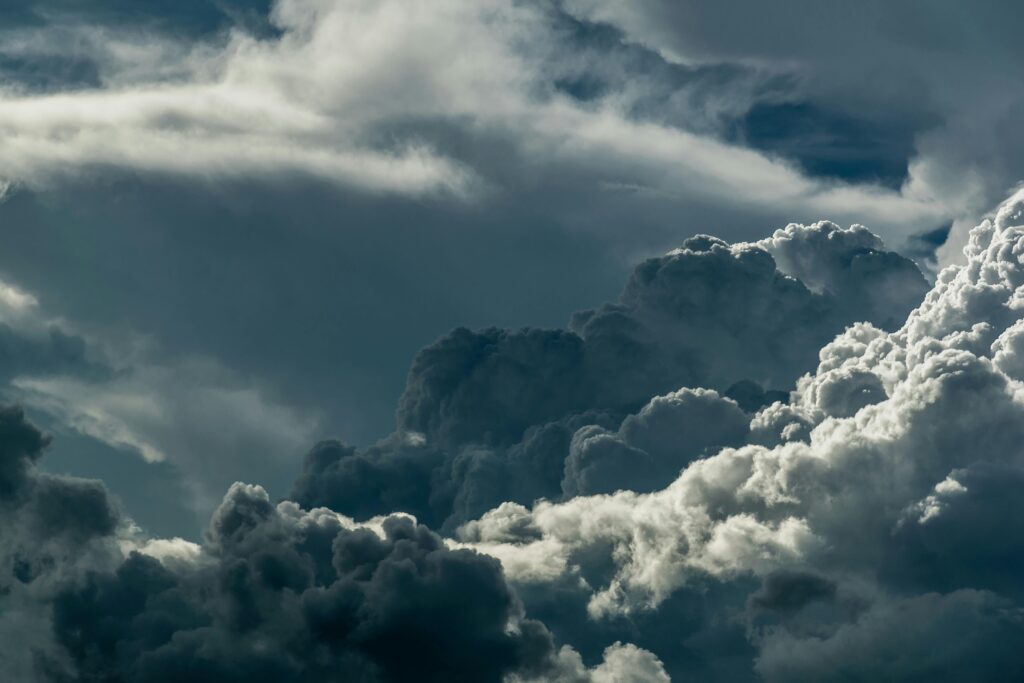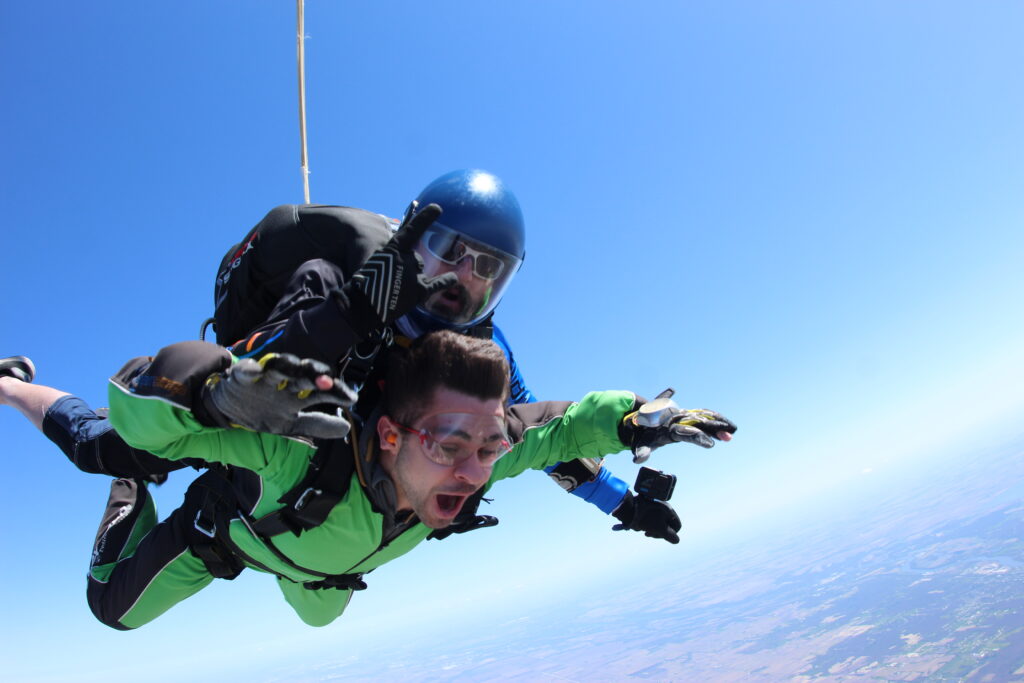Navigating the Skies: Understanding Skydiving Weather
Amidst the excitement of planning a jump, one crucial factor that must be considered is the weather. Understanding skydiving weather is essential for ensuring safety and an enjoyable experience for all involved. Here’s what you need to know:
1. Wind Conditions
- Wind plays a significant role in skydiving. Wind speeds and directions at various altitudes can affect the stability of the parachute and the landing approach.
- Skydive Chicago monitors the wind limits for jumps.
- Wind forecasts are helpful for assessing jump ability. Wind gusts and changes in wind direction can impact landing accuracy and control.
2. Cloud Coverage
- Clear skies are ideal for skydiving, as they provide maximum visibility for all involved
- Cloud cover can obstruct visibility and pose hazards during freefall and canopy descent. Low-hanging clouds may also restrict jump altitudes as some types of clouds may have precipitation.
- Skydive Chicago monitors cloud coverage forecasts closely and may delay or cancel jumps if conditions are not within limits.

3. Temperature and Altitude
- Temperature decreases with altitude, and jumpers can experience significant temperature variations during freefall – especially during the early spring, late fall and winter months.
- Dressing appropriately for the temperature at ground level is crucial, as jumpers may be exposed to colder temps
- Extreme temperatures, either too hot or too cold, can effect jumper comfort. Dressing appropriately is key!

4. Weather Patterns
- Understanding local weather patterns is essential for skydiving operations. Factors such as seasonal changes, prevailing winds, and nearby weather systems can influence jump conditions.
- Meteorological tools such as weather radar, satellite imagery, and atmospheric models help skydiving centers make informed decisions regarding jump scheduling.
- Here at Skydive Chicago, we generally use the US Airnet forecast to check forecasts and monitor conditions
5. Weather Protocols
- Skydive Chicago prioritizes safety above all else and has established protocols for assessing weather conditions and making jump decisions.
- Team members, including pilots and instructors, monitor weather forecasts and conduct pre-jump briefings to inform participants of any weather-related concerns.
- We will delay or reschedule jumps based on weather conditions to ensure the safety of all participants.

Skydiving weather is a critical aspect of planning a safe and enjoyable skydiving experience. Although weather is unpredictable, understanding wind conditions, cloud cover, temperature variations, weather patterns, and safety protocols is essential for both novice and experienced skydivers. Prioritizing safety and adhering to the guidance of trained professionals ensures that every jump is a memorable adventure in the best possible conditions. Remember, while patience may be required when weather conditions are unfavorable, the wait is always worth it for the thrill of soaring through the skies!
The post Navigating the Skies: Understanding Skydiving Weather appeared first on Skydive Chicago.

